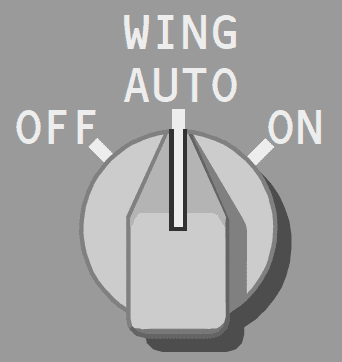When a bleed air leak is detected:
Correct!
Wrong!
Each engine has an anti-ice system duct leak detection system. If an anti-ice duct leak is detected, the respective engine anti-ice valves close.
Automatic ice detection is inhibited on the ground:
Correct!
Wrong!
Three pitot probes and two angle of attack probes are electrically heated for anti-ice protection when:
Correct!
Wrong!
The total air temperature probe is electrically heated for anti-ice protection:
Correct!
Wrong!
All flight deck windows are electrically heated. All windows have exterior surface anti-icing, and interior surface antifogging protection.

Correct!
Wrong!
The side windows have interior surface antifogging protection only.
Pack Inlet Anti-Ice System - The pack inlet anti-ice system provides ice protection for both ram air inlets for the cabin air compressors. An electric heater on the leading edge of each inlet prevents ice formation and reduces ice formation in the duct during icing conditions. Pack inlet anti-ice functions automatically with signals from the automatic ice detection system. Operation is inhibited:
Correct!
Wrong!
With the BACKUP L FWD and R FWD switches in the ON position, a backup antifogging system for the forward windows operates automatically if the primary window heat system fails.

Correct!
Wrong!
Engine or wing anti-ice use modifies stick shaker logic, increasing the stick shaker speed and minimum maneuvering speed.

Correct!
Wrong!
With flaps up, the use of engine or wing anti-ice has no effect on stick shaker speed and minimum maneuvering speed.
Wing anti-ice may be momentarily shed (60 seconds maximum) during high electrical loads, such as during flap retraction.

Correct!
Wrong!
Wing anti-ice may be momentarily shed (30 seconds maximum) during high electrical loads, such as during flap retraction.
Wing Anti-Ice System Manual Operation - In flight with the WING ANTI-ICE selector ON, the system is powered any time:

Correct!
Wrong!
Advertisement
The left and right engines have identical, independent anti-ice systems. This allows the remaining system to operate if one engine is shutdown.

Correct!
Wrong!
The forward windows are equipped with independently controlled:
Correct!
Wrong!
When the WIPER selector in OFF, the respective wiper is off and stowed. Windshield scratching may occur if wipers are used on a dry windshield surface.
The automatic ice detection system senses the existence of icing conditions and provides signals to control the engine, wing, and pack inlet anti-ice. The system has one icing condition detector that measure liquid water content, using TAT and other air data information and temperature sources to determine if icing conditions exist.
Correct!
Wrong!
The system has two icing condition detectors that are heated electrically after engine start.
The Captains and First Officers windshields are equipped with a windshield washer system. Windshield washer switches command:

Correct!
Wrong!
Wing anti-ice is powered:

Correct!
Wrong!
To maintain aerodynamic stability, system logic controls symmetrical operation of left and right wing anti-ice. If one wing anti-ice thermal mat fails, the wing anti-ice system automatically de-powers the opposite thermal mat to prevent asymmetrical wing icing.
Correct!
Wrong!
